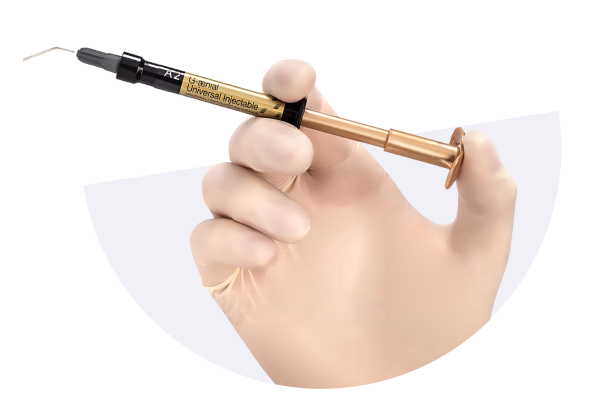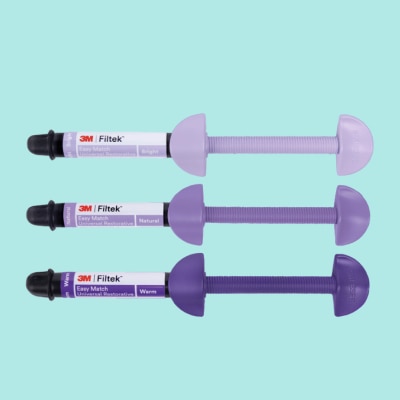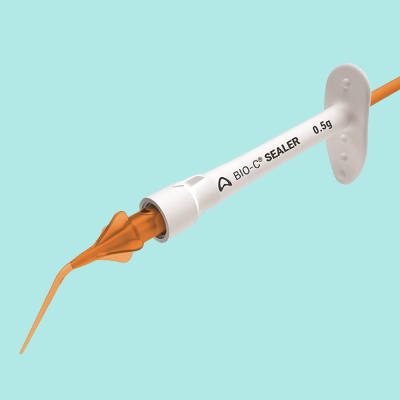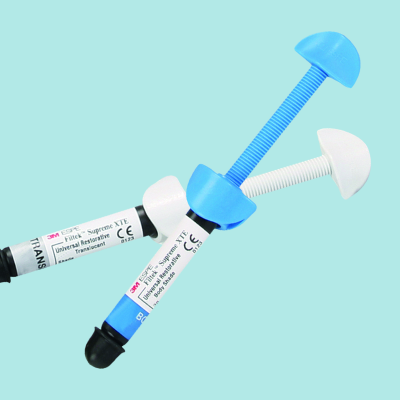Minimally Invasive Solutions for Root Caries in Older Dental Patients
As the population of the UK is living longer, the absolute and relative numbers of older people retaining their natural teeth is on the rise. This means that conditions such as root caries, which are cavities located in the root surface of a tooth, and dry mouth will be more prevalent. The provision of patient-centered, minimally invasive treatment plans using only the most suitable materials is therefore essential for restoring and maintaining dentition.
Why are older adults susceptible to root caries?
There are many physical changes that can come with ageing that make older people at greater risk of demineralisation and root caries. These include reduced saliva flow, reduction in fine motor skills, cognitive decline, less mobility, changes in diet and general oral heath pathologies that come with a risk of comorbidities.
What’s the solution?
Root caries in older patients should be approached holistically with a treatment plan that identifies the risk factors, prevents and protects, treats and controls, and recalls if necessary. GC has an all-encompassing range of restorative and preventative materials with proven results to help you ensure that the population is not just living longer, but living longer with greater oral health.
GC Tri Plaque ID Gel

Tri Plaque ID Gel 40g
GC Tri Plaque ID Gel
GC Tri Plaque ID Gel
Three tone plaque disclosing gelTri Plaque ID Gel can not only differentiate between old and new plaque in a few easy steps, but can also highlight exactly where the bacteria are most active by disclosing the acidic pH. Identification tools like this can help to motivate older patients and give them or their carers straightforward and objective feedback to optimise their brushing technique.
With this product, caries risk assessment can be done within a few minutes.
Plaque can be easily identified by observing the colour of the gel as follows:
- Pink or red: fresh plaque
- Blue or purple: mature plaque (at least 48 hours old)
- Light blue: mature and strong acid producing plaque

Tri Plaque ID Gel 40g
MI Paste Plus and MI Varnish

GC MI Paste Plus Assorted 5pk
MI Paste Plus and MI Varnish
MI Paste Plus and MI Varnish
Strengthen and Desensitise
The presence of fluoride and amorphous calcium phosphate in the saliva creates a favourable environment for tissue remineralisation.
Topical fluoride should be used at home and be supplemented with regular professional application of fluoride varnish. Adjunctive use of bio-available calcium phosphates favours tooth repair and has shown impressive results in reducing hypersensitivity.
MI Paste Plus contains Recaldent (bio-available amorphous calcium phosphate) as well as fluoride (900 ppm). It can be used overnight to enhance tooth repair and reduce hypersensitivity, and is available in five flavours that increase patient acceptance.
MI Varnish contains 22600 ppm fluoride as well as Recaldent and is intended for in-office application. It adheres quickly to the teeth, without clumping and serves as a depot for minerals and fluoride, necessary to maintain or remedy the tooth integrity.
When Recaldent comes in contact with fluoride, it stabilises the fluoride ions to create the ideal source for building the more acid-resistant fluorapatite.

GC MI Paste Plus Assorted 5pk
GC Dry Mouth Gel

GC Dry Mouth Gel 10 Assorted
GC Dry Mouth Gel
GC Dry Mouth Gel
Alleviate xerostomia
Dry Mouth Gel is a unique, sugar-free product that gives long-lasting comfort and sooths symptoms of oral dryness. Uniquely, unlike most saliva substitutes, it has a neutral pH, preserving the oral pH within the safe range to prevent demineralisation. It is also colourless and comes in various flavours for increased patient tolerance.Use Dry Mouth Gel for relief during the day. For nighttime prevention, MI Paste Plus is recommended to provide additional protection against caries, promote
remineralisation and prevent and relieve hypersensitivity from exposed roots.
Dry Mouth gel does not interfere with the effectiveness of Recaldent or fluoride, so they can safely complement each other.

GC Dry Mouth Gel 10 Assorted
Fuji TRIAGE
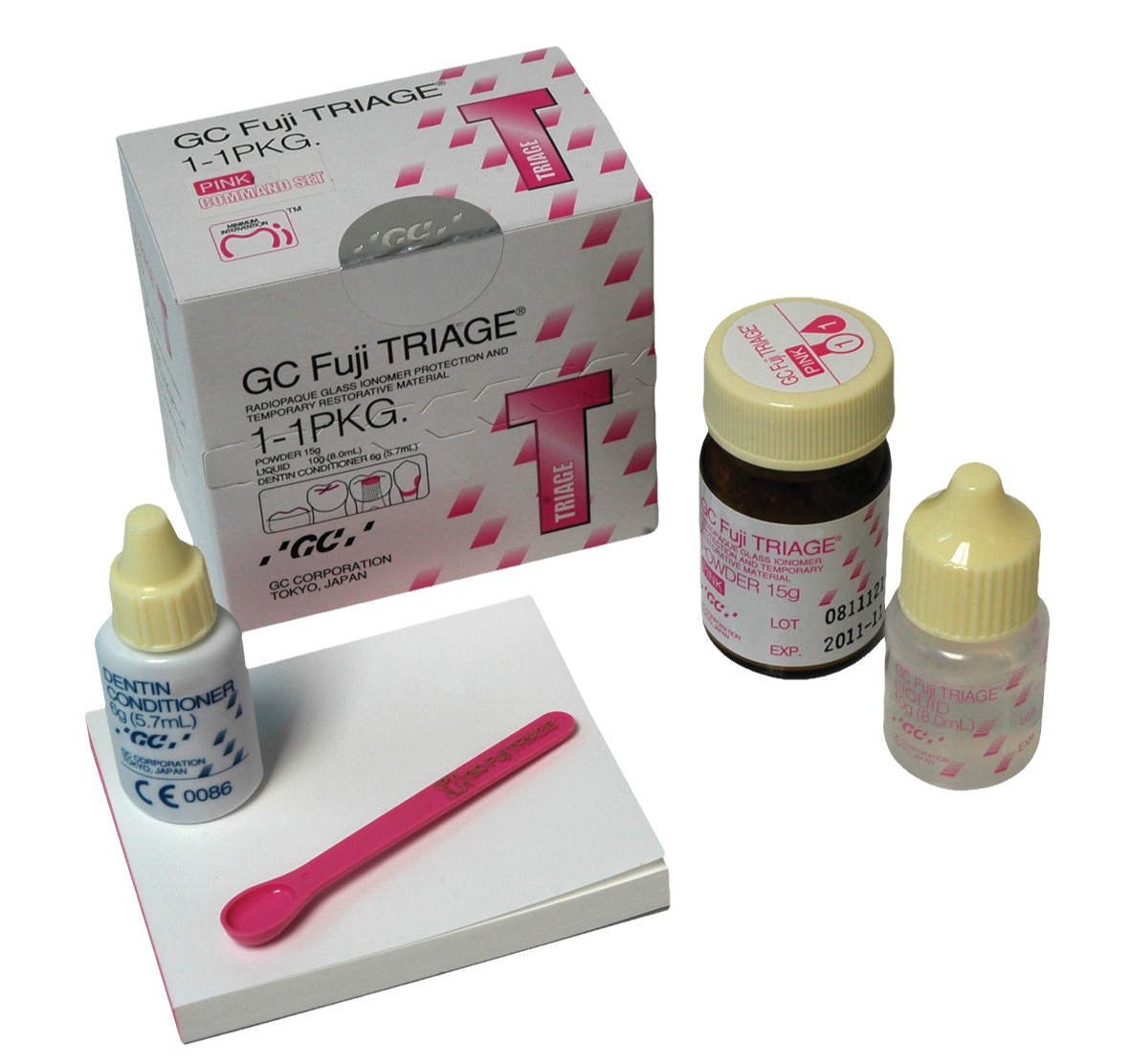
Fuji Triage Pink 1-1 Kit
Fuji TRIAGE
Fuji TRIAGE
Manage erosion, oral hygiene challenges and exposed roots
Fuji TRIAGE, a fluid glass ionomer, will help to protect the surface against caries formation and hypersensitivity
As well as elderly patients developing caries, it is ideal for children with fragile, erupting teeth and any adults seeking immediate relief from sensitive teeth
- Can bond chemically in a relatively moist environment
- Root surfaces are fast and easily protected
- The setting of the pink shade of Fuji TRIAGE can be accelerated with a dental curing light
- Can be coated with MI Varnish to boost the ion exchange
- Easy-to-apply low viscosity
- Chemical adhesion to tooth structure, no need for etching and bonding

Fuji Triage Pink 1-1 Kit
Fuji II LC

Fuji II 2 LC Cap A3 50 Plus 10 Free
Fuji II LC
Fuji II LC
Control over speed
Fuji II LC is indicated for any case where speed and ease of use are priorities. This might be the case in patients who cannot cooperate well, lacking the necessary cognitive or physical abilities to fully cooperate. These restorations show good survival rates.It provides all the advantages of a conventional glass ionomer - plus important advances like dual curing, immediate finishing and excellent aesthetics. With its time-saving technique, it is an ideal solution for many indications. Fuji II LC prevents marginal leakage, eliminates sensitivity and gives protection in high-risk patients.

Fuji II 2 LC Cap A3 50 Plus 10 Free
EQUIA Forte HT

EQUIA Forte HT Assorted A2/A3/A3.5/B1/B3
EQUIA Forte HT
EQUIA Forte HT
Durable restorations placed fast and providing caries protection
EQUIA Forte HT, a glass hybrid restorative, has a pleasant consistency to pack and contour. The EQUIA Forte Coat gives it a nice, where resistant finish and gloss, and additionally adds to its strength by creating the right environment for the material to mature and strengthen.Its ease of placement is especially convenient when treating root caries because of the moisture tolerance and the speed of treatment; it can even be sculpted simply by using a finger.
Through ion exchange, these restorations stimulate tooth remineralisation and prevent demineralisation, making them a great choice for treating active lesions. The advantages of glass hybrids for restoring cervical lesions have been demonstrated in randomised controlled trials.

EQUIA Forte HT Assorted A2/A3/A3.5/B1/B3
G-ænial Universal Injectable

GC G-Aenial Universal Injectable Syringe 1ml A1
G-ænial Universal Injectable
G-ænial Universal Injectable
Aesthetic restorations
When the lesion is non-carious or arrested and there is a possibility to isolate well with rubber dam, G-ænial Universal Injectable is an excellent restorative option for root caries lesions. It can easily be polished to high gloss, which reduces plaque retention, and it is wear resistant, which is important in these areas that are subjected to abrasion.
Apart from that, its bendable tip and thixotropic behaviour makes it easy to access even posterior cavities and to control the placement in difficult areas. It comes in many shades, making it possible to make a highly aesthetic restoration - which is being requested increasingly often by patients of all ages.

GC G-Aenial Universal Injectable Syringe 1ml A1
Recall
It is important to adapt the treatment of older patients to their individual needs and conditions. A follow-up plan that adjusts to response to treatment and caries risk is essential. Periodic risk assessment should be routine for all patients. Preventive measures for root caries might be considered to have a better long-term prognosis than restorative treatments.
However, cavitated root caries are less likely to reverse from active to inactive status compared to non-cavitated lesions, so restoration is required in this case. To make it easier to select the necessary interventions and the best products for each stage of the treatment plan, the framework below can be used for guidance.
